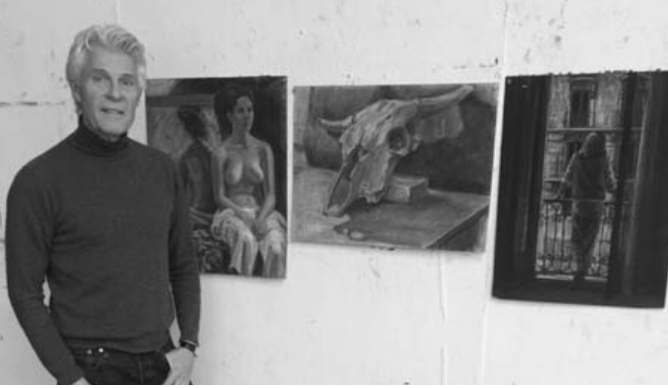By Shelby Townsend
Features Editor
After 38 years of teaching art at the university level, 23 of which were at Long Island University, Professor Neill Slaughter has decided to make this fall semester his last, but he does not plan on ending his art career.

Slaughter has had many accomplishments throughout his career, including 30 art exhibitions and art collections featured around the world, inaugurating an art program in the Duke of Northumberland’s castle in England, and many fellowship trips to places including India, the African continent, and England.
After studying in Georgia and Indiana, Slaughter went on to teach at universities in Philadelphia, Minnesota, and California before making his way to Long Island.
It was a break from school and a trip to Europe after the death of a friend that made Slaughter realize his passion for art, and knowing what he wanted to do with his life. “Once I went around all of those museums, and I saw a lot of these great masterpieces that I had seen in my art history classes, I came back suddenly focused,” Slaughter said. “Here today. Perhaps gone tomorrow. Better pursue what you have a passion for.”
Slaughter said he likes to “practice what I preach,” and as a professor, he has taken many students on short “introductory” trips to various locations in Europe, including Turkey, Italy, France, Scotland, and the Netherlands.
“I have found that the students who accompany me on these trips come back really fired up,” he said. “They want to go into the studio and do something new based on what they saw abroad.”
The history of art and the actual creation of art seem to go hand-in-hand for Slaughter. For example, in one of his current classes, he gave his students information about Paul Cézanne, who is known as the father of abstract art, before they started their own abstract projects.
In his art career, ties can be made between some of his own work and the work of Thomas Moran. As he explained, Moran was an artist in the late 19th century, whose paintings of the Western landscape helped lead to the preservation of the land and the creation of Yellowstone National Park.
Some of Slaughter’s early work also portrays social issues of today. His collection entitled Africa America Amalgamation is meant go against what is typically seen as civilized and uncivilized.
“I love sharing my enthusiasm for art,” Slaughter explained when describing his favorite part of teaching. He said that he has enjoyed his time as an artist and teacher and that he is grateful that he “lives to work” instead of “working to live.”
As for life after retirement, Slaughter said he is considering teaching one or two classes at Parrish Art Museum in Southampton, where he resides, but he plans to focus on drawing and painting in his two home studios full-time.
He is also very excited to have time to visit his daughter in San Francisco, and travel to places around the world that he has yet to see.



Be First to Comment